There’s no doubt that whole fruits and vegetables are a key component of a healthy diet. However, if you commonly peel your produce, you may be missing out on the most nutrient-packed part!
Peels are commonly regarded as something to be thrown away (or hopefully composted). Only those with an easily chewable texture and mild flavor escape the knife. But research has made it abundantly clear that most fruit and vegetable peels are not only edible, they also contain truly outstanding health benefits.
(It is important, however, to strongly consider organic produce when eating the peels — be sure to see “Some Words of Advice” further below in this article for more info.)
So what makes peels so powerful? And which ones should you aim to consume?
Don’t Peel Those Fruits and Veggies!
Before we get into the healthiest fruit and vegetable peels you can eat, here’s a look at three characteristics of peels that will make you reconsider throwing them out. Of course, the specifics will vary based on which fruit/vegetable is being discussed, but these characteristics generally hold true for most, if not all, produce.
#1— Peels Can Double or Triple Nutrients: It’s no secret that fruits and veggies are packed with nutrients. What is surprising is the fact that peels quite frequently contain more nutrients than the rest of the fruit and can drastically increase your nutrient intake. As an example, leaving the peel on a raw apple gives it about 332% more vitamin K, 142% vitamin A and 115% more vitamin C than the peeled version!
#2— Peels Contain Loads of Fiber: Fiber is essential for “regular” digestion. It also feeds the good bacteria in your gut and may help with weight management by making you feel fuller for longer. Unfortunately, many people are fiber-deficient, consuming far less than the recommended daily amount. Eating more fruits and vegetables is an excellent way to up fiber intake, but up to one-third of the fiber content is found in the peels of produce.
#3— Peels Are Sky-High in Antioxidants: Consuming antioxidants is one of the keys to longevity, younger-looking skin, and a host of other health benefits. Once again, fruits and vegetables are high on the antioxidant-rich foods list. But importantly, researchers have discovered that antioxidants are typically concentrated in the outer layer of fruits and vegetables— aka the peels. In fact, antioxidant concentration can be up to 328 times higher in the peel than in the pulp!
Now, even though these three key points generally hold true, there are still certain peels that are virtually inedible. Avocado peels, for example, are rarely eaten because they are hard and rough.
But there are numerous peels you can (and should!) be eating, including some you might not expect.
Top Fruit and Vegetable Peels to Eat
Citrus Fruit

Citrus fruits are an excellent source of vitamin C, which makes them great immune-boosting foods. Surprisingly, the peel typically contains 2-3 times more vitamin C than the inner fruit.
Orange peel, for example, contains triple the vitamin C of the pulp and is a great source of calcium, potassium, magnesium, vitamin B6, and vitamin A.
The peels of citrus fruits are also where most of the volatile essential oils are found. These powerful compounds have noted anti-inflammatory power and have displayed anticancer potential. Many are also potent antioxidants and are found at greater concentrations in the peel than in the pulp.
While you don’t really want to bite into the rind of a citrus fruit, you can grate and use the zest in numerous recipes or chop the peel finely and add to smoothies.
Apples
Apples are something of an in-between fruit. Some people peel them, while others don’t.
Leaving the peel on your apples just about doubles the amount of fiber you would get from an unpeeled apple. The peel also contains small amounts of vitamin E and folate that aren’t in the rest of the fruit as well as more than triple the amount of vitamin K.
Vitamin K is known as a blood-clotting nutrient, but it also has an important role in bone metabolism and calcium regulation.
Apple peels are also loaded with antioxidants like flavonoids, phenolic compounds, and anthocyanins. Notably, the peels were found to inhibit liver cancer cells far more effectively than any other part of the fruit.
Potatoes (and Sweet Potatoes)
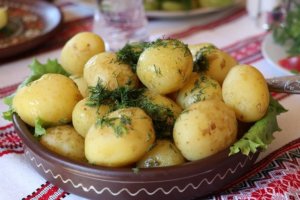
Potatoes often get a bad rap as a starchy vegetable with too many calories. In reality, they are loaded with nutrients and resistant starch, which feeds the good bacteria in your gut. (It’s usually the way potatoes are cooked that makes them ‘unhealthy’.)
When you leave the skins on, potatoes really become a nutritional powerhouse. Minerals, in particular, are heavily concentrated in the potato skin— 17% of total zinc, 34% of total calcium, and 55% of total iron. Dietary fiber also shoots up if you consume the peel.
Overall, a medium potato with skin on provides you with over 25% of the daily value (DV) for vitamin C, vitamin B6, and potassium, 19% of the DV for manganese, and 12% of the DV for magnesium, phosphorus, niacin, and folate. Not bad at all!
Watermelon
You may never have considered eating watermelon rind, but here is a top reason to think about it.
Watermelon contains a decent amount of vitamins, but the fruit is especially notable for its citrulline content. Citrulline is an amino acid that gets transformed into the essential amino acid arginine within your body.
Both amino acids play a critical role in the production of nitric oxide, a substance that lowers blood pressure by dilating and relaxing blood vessels, making it excellent for heart health.
While citrulline is found in the whole fruit, it’s present at a much higher concentration in the white rind (not the green outer skin). If you don’t want to simply gnaw on the rind, try the pickled version or chop it like a vegetable and add it to a stir fry.
Cucumbers
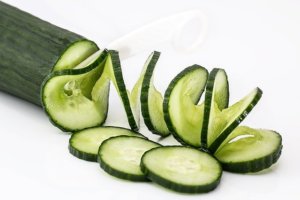
The inner flesh of a cucumber is about 96% water. There are a few vitamins and some fiber mixed in, but most of the nutrient, fiber, and antioxidant content of cucumbers is found in their skin.
By leaving the peel on, you can get a noticeably higher amount of vitamin K (the blood-clotting nutrient important for bone metabolism) from a cucumber. Minerals like selenium, magnesium, and calcium also increase as compared to the peeled version.
Research also indicates that cucumber peels are higher in flavonoids and phenolic compounds (both powerful antioxidants) than the fruit.
Keep in mind that store-bought cucumbers often come with a wax coating. Use a vinegar-water solution to remove this coating before eating.
Peaches
Most people remove peach skin because it has a fuzzy texture. But if you do so, you’ll be missing out on a significant antioxidant boost.
Studies have found that peach skin contains more antioxidants than the rest of the fruit. It’s packed full of polyphenols, like caffeic acid and chlorogenic acid, as well as carotenoids.
Carotenoids are extremely beneficial antioxidants that have anti-aging power for your skin, support eye health, and enhance immune function. They may even help prevent certain diseases, including cancer.
To get around the fuzzy nature of the skin, try slicing your peaches thinly so the skin is barely noticeable. Or add them skin and all to a smoothie.
Zucchini
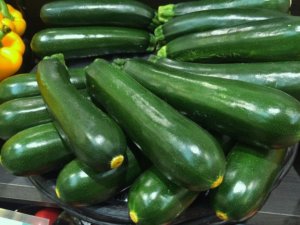
Like cucumbers, much of the inner flesh of zucchini is made of water. The outer peel is where most of the nutrients are found.
More specifically, you can get a decent amount of fiber, some extra vitamin C, and a good amount potassium from a zucchini with the peel left on. Plus, it contains an extra boost of other minerals like magnesium and calcium.
Once again, the highest antioxidant content is found in the skin as well, and the same goes for yellow zucchini (aka summer squash).
If you find the peel of zucchini a bit on the tough side, be sure to choose smaller “baby” fruit. The smaller the size, the more tender the skin will be.
Mangoes
Mangoes have many health benefits and may just be one of the most nutritious fruits you can eat. That being said, mango peel is not a part of the fruit people normally consume.
However, research shows that mango peels are loaded with antioxidants. This includes the antioxidant vitamins E and C as well as polyphenols and carotenoids. They also have a significant amount of fiber and contain compounds with anti-inflammatory, anticancer, and antidiabetic properties.
That being said, mango peels also contain a natural chemical known as urushiol. This is the same chemical found in poison ivy, which means some people may have an allergic reaction to mango peel.
Test out small amounts of the peel first. If you don’t have any reaction, add the peel to smoothies or leave it on mango pieces for a significant antioxidant boost.
Pears
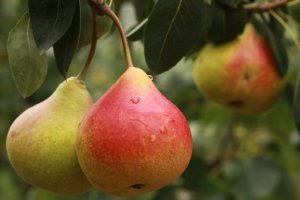
Pears are one of the best fruits to eat to up your fiber intake. They contain soluble and insoluble fiber, which are both important for bowel regularity and feeding the good bacteria in your gut.
As you may have guessed, the peels of pears contribute significantly to their fiber content. A medium-size pear that hasn’t been peeled packs in about 5.5 grams of fiber, which gets you about 22% of the DV for dietary fiber!
Pears are also rich in anthocyanins (red pears), lutein and zeaxanthin (green pears), and polyphenols. All of these are antioxidant compounds linked to lower inflammation and lower risks of heart disease and other chronic issues. And all are most concentrated in the peel.
Tomatoes
Tomato skin contains a unique flavonoid known as naringenin and a similar compound known as naringenin chalcone. Interestingly, studies have discovered that naringenin chalcone from tomato skin has anti-allergic activity. It seems to work by inhibiting histamine release and has potential to inhibit allergic reactions.
Other research has revealed antidiabetic and antioxidant properties of naringenin.
You can get this valuable compound by leaving the skin on tomatoes when you eat or cook with them. Of course, you’ll get a fiber boost, too, plus more of the valuable antioxidant lycopene.
Eggplant
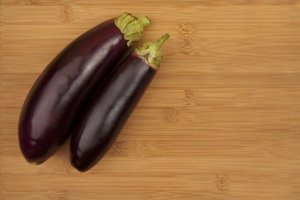
The beautiful purple color of eggplant skin is a hint at the powerful nutrients it contains. When you remove it, you miss out on extra fiber and a group of plant compounds known as anthocyanins.
Anthocyanins are both antioxidants and plant pigments responsible for the purple shade of eggplant. A particular anthocyanin found in eggplant skin, known as nasunin, has demonstrated potent protective effects against free radical damage to cells.
Eggplant skin can be a little tough but will be more tender on smaller fruits.
Grapes
Grapes aren’t usually peeled, but you may not realize how just how much your body gets out of grape skins.
Perhaps the most notable plant compound found in grapes is resveratrol. Resveratrol is an incredibly powerful antioxidant first discovered in red wine. It has well-documented anti-aging benefits, particularly for your heart, brain, and skin.
Most of the resveratrol in grapes is found in the skin. The skin also contains fiber and beneficial compounds like gallic acid, catechin, and epicatechin that you don’t want to miss out on.
Kiwis

Did you know that the fuzzy peels of kiwis are edible? And not only are they edible, the peels are also highly nutritious.
Unsurprisingly, eating the skin along with the flesh ups the fiber content of a kiwi by about 50%. It also significantly increases the amount of folate and vitamin E you get. Antioxidants like flavonoids, carotenoids, and phenolic compounds are concentrated in the peel as well.
You can get some of the fuzz off a kiwi skin by scraping it with a spoon or rubbing it with a cloth. Slice it thinly to get small amounts of the peel at a time.
Bananas
Banana peels are tough, thick, and a little bitter, but don’t let that put you off! They are rich in potassium, just like the fruit, as well as antioxidants, fiber, and tryptophan, which is an important amino acid for your sleep-wake cycle.
Now, you don’t necessarily want to start chewing on banana peels. But you can add chunks of them to a smoothie for an extra nutrient boost. Or boil then bake the skin to improve the texture.
Some Words of Advice
There’s a clear bottom line here: Most fruits and vegetables are more nutritious and health-boosting with their peels left on (with a few notable exceptions).
However, there are some other factors to keep in mind.
First and foremost is the fact that most conventional produce is sprayed with toxic pesticides. Pesticide residue is quite frequently concentrated in the peel, since this is the outmost part of the fruit or vegetable.
Ideally, you would want to buy organic produce if you intend to consume the peel, particularly when it comes to the “Dirty Dozen”. At the very least, wash all produce thoroughly before consuming it, which does reduce pesticide residue.
Specific peels may cause mouth irritation (notably mango and kiwi) or irritate the digestive tract of those with certain digestive issues. Start with small amounts of the less commonly consumed peels to ensure no reaction before you eat larger amounts.
The Power of Peels for Skincare

Citrus peels aren’t just beneficial when you consume them. They also have powerful skin-boosting properties, brightening skin and balancing oil production. Orange peels, in particular, possess anti-inflammatory and antimicrobial compounds that protect skin and reduce the appearance of redness.
If you’d like to “feed” your skin the antioxidant power of citrus peels, look into the Age-Defying Night Cream from Purity Woods. It contains both orange and grapefruit peel oils as well as numerous other organic botanical ingredients that promote younger-looking skin.
Learn more about the Age-Defying Night Cream here, and keep the peels on your produce!


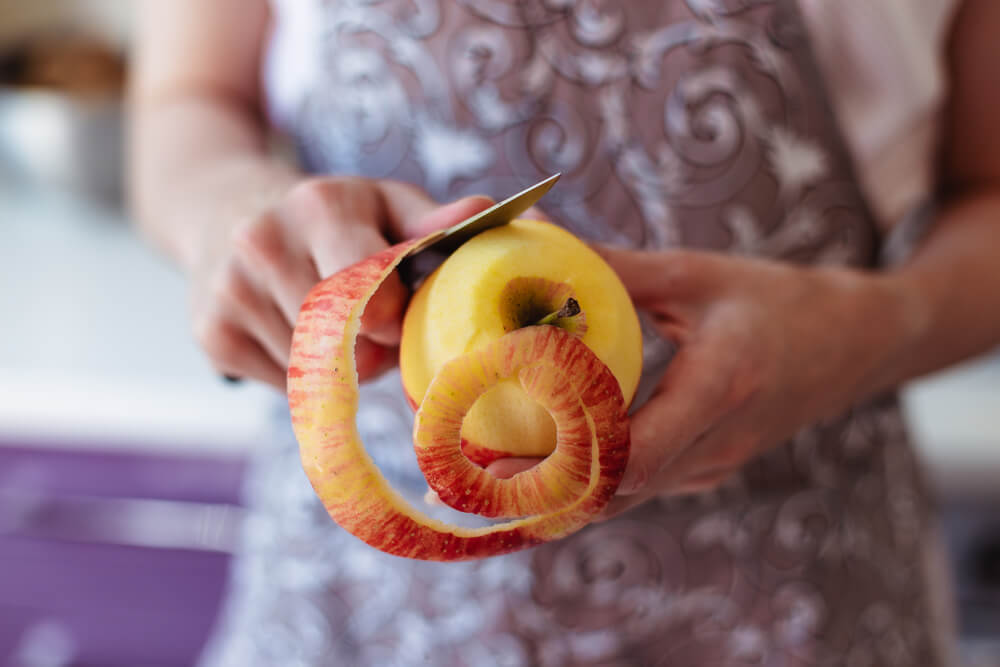
I love this article. I do eat a lot of peels, and the common ones like white or red potatoes, zucchini, apples, grapes and pears, just because peeling them is too much bother. Right now I am in the midst a more fruit/veggie consumption syndrome. I will revisit sweet potato peels which I typically dispose of. Turtles like banana peels in my limited experience, and bananas are recommended for staghorn ferns as well. Kiwis? Who would have thought? Will check out the recommended face cream too – will it erase 80 year old wrinkles? :)))
If your eating the peels of these fruits and vegetables. Aren’t you exposing your body to toxins from the pesticides sprayed on them
Hi Mark, thanks for the feedback, organic is strongly recommended in the article for this reason!
Brian, I soak my fruits and vegetables in water is baking soda added. I heard that helps reduce the pesticide load. Is adding baking soda helpful?
so do I often with a good shot of vinagar.
we use both baking soda, white vinegar and Dr Bonner diluted liquid soap also. Thanks!
I just learned this when reading about strawberries. You answered my question if the b soda works for other fruits. Thanks!
For those of you that haven’t tried cleaning fruit with baking soda, it is easy and there is no change to the taste. I will be doing this for all my fruit and vegetables going forward.
I’m thinking that soaking veggies and fruits in MMS for a few minutes may help. I will have to get some from a reputable company since I don’t know how to make my own.
Right … specially from China
I like sweet potatoes skins. Kiwis,, no they break me out!
For me the skins just have too bad spots that need to be tossed after i slice and steam them — even for the organic ones which really taste better than non-organic. Also better to peel because sometimes i have left in fridge too long and there are some molded spots that also need to be cut out before steaming.
I don’t eat moldy food. Mold is in whole fruit or vegetable if you see it in one spot….Not worth it.
mold doesen’t travel through dense fruit, as it does with for example bread.
if you cut away the visible mould and/or softened parts and the fruit tastes good, then you can eat it.
Is mold on bread always bad? I thought that penicillin, an antibiotic, was made from the same mold found on bread. Then, perhaps some bread with a bit of mold could be a natural dose of antibiotic and add to the strength of the immune system?
Baked sweet potatoes are fabulous tasting and fabulously nutritious. Eat the skin of baked sweet potatoes along with the flesh!
My friend bakes sweet potatoes., then eats the skin with the potato hot or cold as a snack. It is great!
I buy purple sweet potatoes when I can get them (transported from Okinawa I presume and grown in California). I am trying my hand at growing them in a child’s swimming pool in NY but have to wait till it stays above 50 or so at night as they are sub-tropical. Have a friend who got 82 pounds of white potatoes her first try in a large child’s swimming pool. Sometimes people throw the pools away because they leak or have a hole in them, but you need to make several small drainage holes in a new one. Purple sweet potatoes are one of the things along with wild caught fish and sea vegetables that may be responsible for Okinawan women living to be the oldest on earth.
Great information – thanks!
You didn’t mention carrots, though, which I never peel. Should I be peeling them?
No, my wife is a biochemist and always says not to peel the carrots. That’s where the minerals are. We just wash them
I just scrub carrots with a stiff bristle brush under running H2o.
Loved the article. thank you for writing and especially your dad jokes.
Tash
I save the jokes for my grandson who lives in a nearby state. It is a two day drive to visit, so I don’t see my grandson often.
When we were kids we ate the peels from apples when mom made apple pie
Very interesting, I’m keeping this. I make soup with the unwanted parts of vegetables plus carrots.etc.
I also cook the remains of chickens and mix this with the veggies.
This is an excellent article
Thank you.
Very informative thanks!
I have always eaten some of the peel and rinds of the lesser known fruits and veggies..it makes sense. However, I was not familiar with mango peel being edible! Did you know there’s such a thing as banana peel bacon? I made it once and found the marinade too salty, but the texture was great. Looks like I’ll have to give that another try!
Wow, did not know about banana peel bacon! Thanks for the info.
Excellent info! Some stuff I didn’t know even though I follow nutrition info. Thanks.
Good article about the nutritional value of fruit and vegetable peels. I don’t know about the peels retaining their potency in a beauty cream, and wonder how many preservatives and other additives are needed to extend shelf life. I’ll eat the peels.
Thanks, since hearing you and others mention it before I’ve been regularly eating more peels and am sure I can still include more yet. Many of these I’ve never peeled for myself, others I’ve tried more recently. Like another lady says I don’t peel carrots (or use peel from other household members to bake gently as crisps) and similarly for parsnips. I’ve also started baking thin slices of swede and various swished which I eat too (and bake the seeds from butternut/ pumpkin etc) I waste as little as possible from any fruit or vegetables and compost any I can’t use. Inspired to try more now!
I like to eat the peels of many fruits and vegetables that most people don’t eat but there were a few new ones here that I will try. Thank you for the article.
SWEET POTATOES TOO?
I agree as I have mostly left peel on including carrots. Great article.
thanks for the specific apt insights I deeply appreciate ~ Kare Anderso
Thanks for this article! My young grandson, when I handed him a kiwi fruit said “can I eat the peel”. I’d never heard of anyone doing it but I knew that bit of peel can be missed when they are peeled and don’t cause a negative reaction so I said “yes”. Since then at the age of 16 he still always eats them with the skin on. Wise boy
Years back, when I had leaky gut, I would eat Kiwi with peels on and get terrible, painful gut cramps. Nowdays, I eat the peel everytime. That is where a LOT of the tangy flavor is located, which makes the inside of the peel my favorite part!
My favorite pickles growing up were my mom’s watermelon rind pickles. I’ve tried to make them since she passed and didn’t get them right. Your article has made me decide to try again. I’ve always left the peels on potatoes and carrots because they taste better that way (yes, even mashed potatoes). Who knew I was eating healthier? Thanks for the info, I’m going for the kiwi and mango skin (small amount to try first) in my smoothies. Organic only because pesticides can’t be washed off good enough for my allergies to them. Love the dad jokes!
thank you for this article. I eat most of the skins referred to. However, I need to try mango and kiwi skins.
Thanks for that. It is very interesting.
I eat most fruits with peel on (apple, pear, peach) but had not thought about mixing other peels into smoothies. Great idea! Thanks
Being born in India and brought it was normal for us to eat all seasonal and other fruit with peel. Peeling was considered ignorant, thus from childhood, we learned that since you can not eat the Banana peel, we used to each the PITITH the white stuff, which is great digestive and full of fiber
Among the veges it was never heard of to peel Cucumber, Reddish, or any green veg. Yes, that is why Asian are used to eating and enjoying every seasonal fruit and veg. This article is a great eye-opener for those who have inhibitions to eating without peeling.
GREAT JOB EXCELLENT ARTICLE.
Great info! I generally eat some peels, but learned my body could be benefitting from eating more…although it would be less in my compost pile😉
Thank you for your very informative articles! I get so inspired to up level my nutrition and and general well-being. Your articles bring in the light 🙂 I love your skin cream too!
Great information. Living in Minnesota, unable yo get really fresh fruits snd veggies much if the year, eating the peels will be helpful .
I enjoy the jokes .thx
One of the best informationally-packed articles I’ve read in a while. I learned a bunch of new material which is saying a lot because I read all the time to self-educate. Thank you for the time and effort you put into this!!
I would like to add Pomegranate peels which contain high amounts of punicalagin, a polyphenol that has been shown to have anti-cancer properties in some studies. In one study, pomegranate peel was found to be a treatment for prostate cancer because of its ability to induce apoptosis (the death of cancer cells).
Pomegranate peel has shown to slow or stop the spread of cancer cells in breast and colon.
Punicalagin also helps to reduce inflammation in joints, therefore helping with arthritis.
Pomegranate peel is also rich in polyphenolic flavonoids, which are potent antioxidants much the same as in green tea.
After eating a pomegranate, I cut up the peel and dry it, then grind it to a fine powder in my coffee grinder. I use a teaspoon of this to make a tasty tea.
Very helpful information. When I lived in Mexico and would get really sick every January with pneumonia, I learned by the grace of God and after lots of doctor visits that didn’t make me well, even with daily shots, that pomegranates were the one thing that would make me well. Interestingly, they were only available a month or two each year, which was January, so on my own, with the Lord’s leading, pomegranates likely saved my life. Good for the heart, too, as well as cancer and so many other diseases. How could anything so yummy be so healthy?
Thanks so much for the dehydrated pomegranate peel in a coffee mill. I’ll definitely do that during pomegranate season 🙂
Very useful information. I have dried pomegranate peel but did not know how to use it.
Thank you. That you know what you just offered is humbling.The inventiveness in the drying and grinding is fun as I do things like that: surreptitious nutrition.. For those of us who try to be aware, it would be helpful to know what combinations and how many for daily requirements. This article tells of so much beyond general attempts at self-care, how does an ordinary person, not reading this article, even hope to keep the circuitry at full tilt?
Wow! Thank you all for this life saving information!
Thank you! Your information was very generous and enlightening, especially pomegranate peel ground up to make tea. I’m grateful to you.
I’ve been thinking that we could dry/grind any peel allowing us to buy in peak season at best price and easy to store. I also slow simmer fruit peels to produce a tea.
Thank you for adding pomegranate peel. I do the same thing with its peel,
This is awesome!!
83 years old,stage 4 NHL cancer survivor….” GOD…NATURE AND..A TUNGSTEN STRONG/POSITIVE/HAPPY MIND!!!!!!!!, since 2014 and…..counting…..vegetarian(n0 meat….but lots of…small fish…(less mercury)…mostly sardines..).SKINS ?????? I use them all…….dehydrated…(low temperature…max…100 Fahrenheit…).. May God be with you all always….Mario……..cbc1960slife@gmail.com
Where’s the dad jokes ?
I couldn’t find em ~
do to chemical spraying and other pesticides in the soil I PEEL unless I grow it.
I love this article. Always send me good information like this.
The watermelon information was new to me, thanks.
I was also a victim when I tested the myth of slippery banana peel, near midnight on a deserted footpath. No witnesses, luckily.
Thank you
Thank you for this interesting and informatve article. The uses of mango and tomato skin with diabetic properties was most interesting to me. Also cooking the rind of the melon is news to many of us. Sure to try it.
I think it’s a great article and suggestion. However I don’t underestimate the chemicals from spraying. I learnt that soaking in baking soda for a few minutes helps cleaning them off. I live in an area of apple orchards and vineyards. The amount of spraying is unbelievable! I guess the poisoning takes the benefits of eating the peels mainly away! Whenever possible I eat organic fruits and veggies!
Thank you for all your Information!
Love the article. Peels are something, for the most part I leave on so this article justifies my actions. Thanks
Interesting! I would NEVER have thought to eat Kiwi or mango peels…not sure I ever will. Hmmm.
Thanks for the article on peels. Peels are something that i leave on a lot of vegetables that I cook. I’m glad to know about more I can eat!
It is, however, exceedingly DANGEROUS to consume the peel of any produce that is not organic, and while the article does recommend organic produce for peeling, this recommendation comes at the end of the article, whereas it belongs at the very beginning! Non-organic produce commonly contains pesticides, fungicides, rodenticides, and other super-toxic chemicals, and eating these is most unwise. The way the laws are written permits wildly poisonous chemicals to be used in both the growing and marketing of produce, and, as the biological chemistry of animals, insects and humankind is essentially quite similar, that which is harmful for any is potentially, and likely, dangerous for all. The article should be re-formatted to present the warning about non-organic produce at the top. As it now stands, this articles, while greatly informative on an overlooked and very significant subject, may lead some to ingest some very dangerous chemicals. As the ancient Greek doctors’ proverb cautions us, first, do no harm!
Agree and have placed a note near the very start on this front. Thanks for the insight!
Thanks for pointing this out, Joel, about the need to move the “organic peels only, please!” part to the FRONT of the article. I know in years past that some friends would not even eat conventional bananas ever due to “Sheep wormer” being sprayed on them! Just one example. Most people do not know this, but apples are near or at the top of the most poisoned foods according to The Environmental Working Group (EWG.org). This is why we only eat organic apples and have made friends with a lovely older couple who are organic orchardists. They only use Basic H on their orchard for pesticide, and possibly copper spray for fungicide when necessary (If memory serves). Unfortunately, I found an article about toxic cleaning supplies and it listed Basic H as not so great for you, either! Say, WHAT? Are you telling me I can never eat an apple ever again?
Anyway, I agree. If you look up the “Dirty Dozen” and the “Clean 15” on EWG’s website, you will learn what to eat that is +/-safe without eating organic, and what MUST be organic if you are going to ingest it. I would NEVER eat conventional apple peels, that’s like chewing on a prescription to GET CANCER really fast! BTW, I am a “Certified Natural Health Professional”, so am grateful for the additional information that Brian has offered. Great ideas for extra nutritional prepping, too!! Til now, mostly what I’ve heard about (organic, of course) apple peels was for the pectin to make jams and jellies! Brian, you are definitely one of the BEST!!
I love all of your great articles. They are all full of very helpful
information. Thank you, Brian, for every one of these interesting
and educational articles.
I started eating mango peel about 4 years ago, it’s actually very common in Africa.
On the other hand, the pesticides for bananas are so powerful, the banana growers are all dying young from cancer. There is a documentary about this. I love this article, but I doubt you can wash a banana peel enough to get everything off. You would HAVE to go organic for banana peels.
Agreed.
You don’t address eating potato peels. I’ve heard that they are healthy to eat, but have also heard not to eat them at all. Which side of the debate to you come down on & why?
Somewhere, I read about making “banana tea” using banana peels. It’s actually pretty yummy, esp with some cinnamon!
That is a question….does cooking at high heat not kill off the pesticide content…just never eat raw, like I have done in a smoothie. I freeze older bananas and toss whole into smoothies …does freezing kill anything sprayed on….
I was raised eating some of the peels mentioned. Then in 2017 I started working with a functional medicine doctor who recommended peeling most everything because of lectins. Do you have any insight about lectins in peels? Also this doctor recommended deseeding zucchini, cukes, tomatoes, etc for same reason. I don’t necessarily agree with it all so look for others’ opinions and insight to make comparisons.
Thanks for this Mark,
I like the idea of pickled green flesh of watermelon.
We eat many of fruit and veggies you talked about with their peels.
I don’t think though that we will take to banana and mango peels.
My husband has eaten kiwi with peel in the past, and I would like to try
to take off some of the fuzz from it with a spoon for myself.
Overall good to know that we’re doing the right thing most of the time.
Brian, I enjoyed this article very much. It is informative and just another piece of knowledge that we can do much for our health, so being informed is wonderful! Thank you for all you do and care about including your delightful “Dad” jokes!
Very interesting. Thank you. I do eat most of the skins on
my fruit but was surprised at some skins that are edible.
Could a person dry the skins of some of the fruit and
would that be nutritional eg, citrus fruits?
Good article. Thanks. In addition to eating the skin/peel of fruits & vegetables, I think it’s also important to eat the core & seeds, as well as roots & stems. Of course, clean organic produce is always best, but (aside from a few exceptions) eating the whole fruit or vegetable generally means more nutrients and less waste!
Thanks always for such good info. Unfortunately I, in later years developed, or more correctly discovered allergies to a host of raw fruit and vegetables. A suggestion to peel didn’t work but as recommended, for me they need to be frozen, cooked or dried and that seems to be the case. I still eat lots of fruit and veggies – one way or the other. Always retain articles like this for reference.
A great article, I am From NZ where many many or most families have their own vege gardens and we ate the skins of all root veges as well as most of the veges grown above ground, we ate the whole vege. The same with fruit, well most of it. We always had access to a multitude of fruit. Most gardeners and vege stands do not use chemicals, mainly fish fertilizer. We did not eat watermelon rinds in fact were told that the white flesh was poisonous same with banana skins. Of course, I have never eaten pineapple skin nor avocado skins. I am 69 but have been in the USA since I was 25 and have been blessed enough to live in Southern California until 1997 and have resided in Central Florida since then and have had access to an abundance of organic fruits, vegetables, and protiens. I also organically grow what I can.
PS when out at the Kiwi vines , press the Kiwi for ripeness, pick it, and just wipe the fuzz off on the side of your pants, eat the whole thing. Also over the last several years there has been for sale a Kiwi Berry ( the size of a large grape) it is shinny and has no fuzz.
Also for the last 40 years, I no longer make beautiful white creamy mashed potatoes that had to be peeled. I now make “smashed potatoes” any potato with the skin on prepared the same way. I no longer possess a Pealer just a hard-bristled handheld scrub brush.
Cherry🍒
Take the peel from a banana you have eaten, It will be about 3 or 4 strips. Put on a flat surface, With a dinner fork, scrape the “strings” off the external peel in the long direction. They come off curled up. Eat these for lutein, good for eyesight, skin, and much more. If peel is organic, make tea by boiling the peels, cut up.
Nice article! Thank you!
At 78, I have more and more come to eat only one meal a day (my”Brundi”), which includes a large smoothie, which in turn includes about 25 different ingredients, but the base of which is 1/2 an unpeeled kiwi, 1/2 an unpeeled banana, 1/3 of an unpeeled orange, and 1/2 a peeled avocado. These I prepare in advance, and store in small bags in the freezer. (I then add frozen berries, fresh fruits and vegetables, green powders, cinnamon, fresh ginger and turmeric, black pepper, fermented vegetables, green tea, beet juice, and kombucha… DELICIOUS smoothies!)
Very interesting and helpful article! I eat most of my peels anyway, but there are a few new ones that I will add to my consumption, especially in smoothies! Also reading all the different nutrients that you can add to your diet is very educating. Thank you so much for this!
In southern Ecuador some people boil pineapple skins to make a nutritious tea that is supposed to be medicinal as well. I have tried it and the tea is tasty.
Thanks for all the info. I have always eaten the peel on potatoes,apples ,pears and a few others but i am a bit dubious about some , if i cant buy organic because of the pesticides. I have read to wash the fruit and Veg in apple cider vinegar. As a young girl i learnt that orange peel was good for sparkly eyes . Dont know if it ever worked but used to eat it anyway.
I have enjoyed the tips from people on here too
Thank you so much for sharing all this information about peels .I knew about potatoes peels and apples . We used to eat a lot of them with the peels .
Thanks for sharing again! Great info.
Very good information . I will eat more peels from now own.Thank you Brian for sharing all these valuable information for your health .
have used most of these peels at one time or another when making a curry or smoothie
Thanks for the great advice, Brian. I rarely, if ever, peel fruit. I do thoroughly soak and clean fruit and veg to remove the pesticides. There are some though, that I never thought was edible – banana, kiwi, mango and watermelon – good to know. I do grow some of my own fruit. I live in Australia, so growing tropicals.
Thanks, great to know which fruits and vegetables to particularly not peel….I don’t peel most, but I admit I don’t eat banana peels or watermelon and mango rinds….hmmmm…..I also admit that many years ago I thought that since there was some value and no harm in peels, it made sense to not do the extra work (including carrots!)! Since then I’ve learned of the benefits and enjoy my peels…
Toxin-free lemon skins, after juice is squeezed from the lemon, can be tossed in a jug or jar and covered with water for drinking after a few hours refrigerated soaking. This can be added to over 2 or 3 days while still fresh enough, as more skins become available. A tasty and refreshing very nutritious drink.
I save all my grapefruit and lemon skins in the freezer until there is enough to place in a large pot. Cover them with water (weight them down) Leave to soak for 24hrs then boil for 3-5 hrs. Do not remove the pot lid until your skins have cooled completely, then strain and bottle. Drink undiluted with a little honey if required.
Another excellent winter drink – take 2-3 whole lemons, 2-3 garlic cloves, a good chunk of ginger and half a cup of water. Blend together finely. Store in the fridge. Use 1-2 tsp in warm water with 1 tsp Manuka honey for a great morning starter.
I use almost any kind of fruit peel July through September to start a batch of homemade vinegar. It takes about three months, but if you have large glass jars and fill them with water and your fruit peels and cover with cheesecloth or gauze so so it can breathe, you’ll have some wonderful tasting vinegar in a few months. You can continuously add more peels. Google search or YouTube search will reveal the specifics about making your own vinegar. I never waste a peel, composting them or making vinegar. But now I’m going to eat more of them besides just using them for my homemade vinegar. Thanks for a wonderful article!
I don’t peel most of the things you mention, but haven’t tried mango or kiwi, and can’t really be bothered with the prep required for bananas. I thoroughly scrub any vegetables I am going to peel, and they go with the tough stalks and other bits in a bag in the freezer. When I’ve got enough, they go in a big pot with some herbs and filtered water and I boil them to make vegetable stock. It’s a great basis for soups.
I never knew how many fruits and vegetables skins are edible. Great article. love it.!! Thanks
Thank you for this wealth of information on eating skins, from both you and all the people leaving their tips and tricks! I have eaten the skins of most of these, but never mango…pineapple wasn’t mentioned. Glad to learn about pomegranate. My housekeeper here in Africa told me about using pomegranate skins, but didn’t tell me how she uses them…now I want to find out since I have a pomegranate tree! Am leery of banana skins…never knew about removing the strings on the outside and eating them! So much to learn and digest (pun inteneded!).
I’ve been eating oranges with the peel on ever since I noticed them as an ingredient for a supplement.
Great article, thanks.
I dehydrate all citrus skins, powder them and add it to my muesli.
I will be doing the same with a lot of the fruits mentioned in the article and create my own “multi vitamin”.
Thanks again
My only concern about this excellent article is the tomato peel. Apparently it is high in lectins
Although I generally eat the peal of apples, sometimes I do want to remove it. When I do. I save the peal in the container in the freezer. When I get enough, I dehydrate it and grind it up then sprinkle it on salads, smoothies etc.
I also save some peals and vegetable scraps I don’t want to eat and use them for making vegetaable broth.
I have always left the peels on most of my fruits and vegetables, there are a few on this list I hadn’t thought of but will definitely try. On the citrus fruit I use a vegetable peeler to thinly slice the rind off and then freeze it to use in either baking or just put a few pieces in water or tea, then I peel and eat the white pith before consuming the rest of the fruit. I also leave the potato skins on even for potato salad. To get rid of some of the starch you can soak the potatoes for a minimum of 30 minutes in water before boiling. Once they are cooked let them completely cool, again this helps cut some of the starch down. Eating your potatoes cold is what helps cut the starch, so hot baked potatoes will have more starch than cold potatoes will. There is so much goodness in our fruits and vegetables and we should be consuming the whole item and not just some of the parts. Thanks so much for the great info.
Thank you for the very interesting article. Some peels I would never have thought of eating. Very interesting comments as well. I’ve always eaten apple, pear, and guava peels, but not bananas or chirimoyas. Will have to check them out.
Great article, thanks!
Brian, this article was very useful !
Thanks for your time and efforts to put it together.
I bought your transcripts from s
Your summit “Let’s Get Personal” awesome info !!